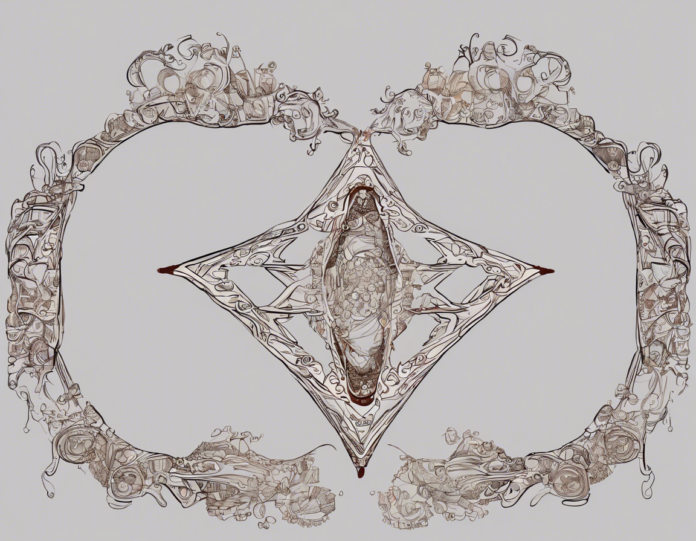Java is a versatile programming language that is widely used for developing various applications, including web and mobile applications. One of the key aspects of Java programming is understanding relationships between classes and objects. In object-oriented programming, relationships between classes and objects play a crucial role in defining the logic and behavior of the program. In this article, we will explore the different types of relationships in Java, including inheritance, composition, and aggregation.
Inheritance in Java
Inheritance is a fundamental concept in object-oriented programming, where a new class (subclass) is created by inheriting properties and behaviors from an existing class (superclass). In Java, inheritance allows a subclass to reuse the fields and methods of a superclass, promoting code reusability and organization.
Types of Inheritance in Java:
- Single Inheritance:
Single inheritance in Java occurs when a class inherits from only one superclass. For example:
“`java
class Animal {
// Class implementation
}
class Dog extends Animal {
// Class implementation
}
“`
- Multilevel Inheritance:
Multilevel inheritance involves a chain of inheritance where a subclass becomes a superclass for another class. For example:
“`java
class Animal {
// Class implementation
}
class Dog extends Animal {
// Class implementation
}
class Labrador extends Dog {
// Class implementation
}
“`
- Hierarchical Inheritance:
Hierarchical inheritance occurs when multiple classes inherit from the same superclass. For example:
“`java
class Animal {
// Class implementation
}
class Dog extends Animal {
// Class implementation
}
class Cat extends Animal {
// Class implementation
}
“`
Composition in Java
Composition is a “has-a” relationship where a class contains an object of another class. It allows for creating more complex classes by combining simpler classes. In composition, the lifetime of the contained object is managed by the container class.
Example of Composition in Java:
“`java
class Engine {
// Class implementation
}
class Car {
private Engine engine;
public Car() {
this.engine = new Engine();
}
}
“`
In the above example, the Car class has a composition relationship with the Engine class, where a car “has an” engine.
Aggregation in Java
Aggregation is a “has-a” relationship where a class contains a reference to another class, but the contained class has an independent lifecycle. It is a weaker form of association where objects can exist independently of each other.
Example of Aggregation in Java:
“`java
class Department {
// Class implementation
}
class Employee {
private Department department;
public Employee(Department department) {
this.department = department;
}
}
“`
In the above example, the Employee class has an aggregation relationship with the Department class, where an employee “has a” department.
Differences Between Composition and Aggregation
- Ownership:
- In composition, the container class owns the contained object and is responsible for its lifetime.
-
In aggregation, the contained object has an independent lifecycle, and it can exist without the container class.
-
Relationship Strength:
- Composition is a strong relationship where the contained object is part of the container object.
-
Aggregation is a weak relationship where the contained object is associated with the container object but can exist independently.
-
Initialization:
- In composition, the contained object is initialized within the constructor of the container class.
- In aggregation, the contained object can be passed to the container class during initialization.
When to Use Inheritance, Composition, and Aggregation
- Inheritance:
- Use inheritance when a class “is a” type of another class and shares common properties and behaviors.
-
Avoid deep class hierarchies to prevent complexity and maintainability issues.
-
Composition:
- Use composition when a class “has a” relationship with another class and contains it as a part of its implementation.
-
Composition allows for better flexibility and modularity in design.
-
Aggregation:
- Use aggregation when a class “has a” relationship with another class but the contained object can exist independently.
- Aggregation is useful when objects have a temporary or optional dependency.
Frequently Asked Questions (FAQs)
- What is the main difference between inheritance, composition, and aggregation in Java?
-
Inheritance involves an “is a” relationship, composition involves a “has a” relationship with ownership, and aggregation involves a “has a” relationship with independent lifecycles.
-
Can a class exhibit both composition and aggregation at the same time?
-
Yes, a class can have composition with one class and aggregation with another class if it contains objects of both types.
-
Which relationship promotes better code reusability: inheritance or composition?
-
Composition generally promotes better code reusability as it allows for more flexible and modular designs compared to deep class hierarchies in inheritance.
-
Is it possible to change the contained object in composition at runtime?
-
Yes, in composition, you can change the contained object during the lifetime of the container object, providing flexibility in design.
-
How does the Java compiler handle method overriding in inheritance?
-
In inheritance, the Java compiler follows the rules of method overriding, where a subclass can provide a specific implementation for a method of its superclass.
-
What are the drawbacks of deep class hierarchies in inheritance?
-
Deep class hierarchies in inheritance can lead to maintenance issues, tight coupling between classes, and difficulties in understanding and extending the codebase.
-
When should one prefer aggregation over composition in Java programming?
- Aggregation is preferred over composition when objects have temporary or optional dependencies, and the contained object can exist independently of the container class.
Understanding the relationships between classes and objects in Java is essential for designing scalable and maintainable applications. By leveraging inheritance, composition, and aggregation effectively, programmers can create well-structured codebases that are easy to extend and maintain.
